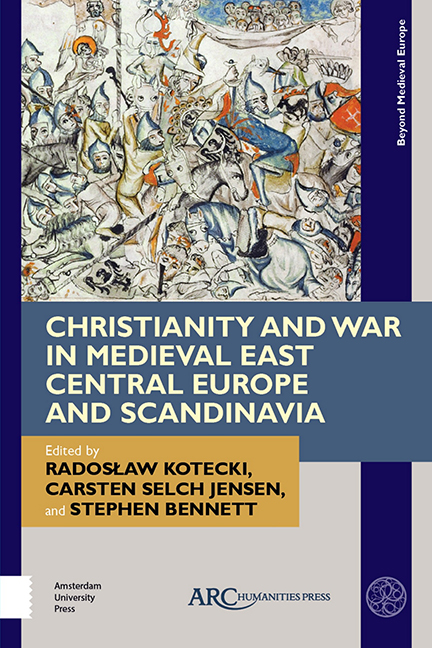Chapter 6 - Depictions of Violence in Late Romanesque Mural Paintings in Denmark
Published online by Cambridge University Press: 27 May 2021
Summary
THIS CHAPTER EXPLORES the connections between violence, war, and martyrdom, and ecclesiastical authority in late Romanesque Danish art in churches. In particular, it examines what these depictions might communicate to the congregation or visitor. It is noteworthy how the subject of fighting knights became a pronounced iconographical theme in the decades around 1200 in ordinary rural Danish churches. This subject has puzzled scholars and a long debate on the nature and meaning of these motifs has lasted for almost a century within Scandinavian scholarship. At the heart of the debate is of course the question of what these images of battle scenes are depicting in the first place: a question which is not easy to answer as most of the pictures are more or less fragments of now lost larger decorations. While both sound and credible interpretations have been put forward by brilliant scholars, we thus ultimately cannot reach any absolute conclusion as to what these striking scenes on the church walls were intended to show. However, perhaps even more pertinent, we might ask why they were considered relevant decoration for the walls of rural parish churches in the first place.
This is a central question here, and over the following pages I shall try to elaborate an interpretation that argues why violent self-sacrifice became an important theme in late Romanesque art and ultimately had to do with ideas about Christianization and ecclesiastical authority. Most scholarship on these fighting and questing knights has not attempted to interpret the motifs as parts of larger decorative programmes, so that important points concerning their nature and meaning seem to have been overlooked. The way into the ensuing discussion passes through a close reading of a particular suite of paintings dealing with the martyrdom of Thomas Becket, which is accompanied by other motifs that emphasize the overall message to the beholder. Through this decoration we shall explore a number of other programmes before we finally end with a discussion of how all of this points towards the notion of salvation and the entrance into the New Jerusalem.
- Type
- Chapter
- Information
- Publisher: Amsterdam University PressPrint publication year: 2021



